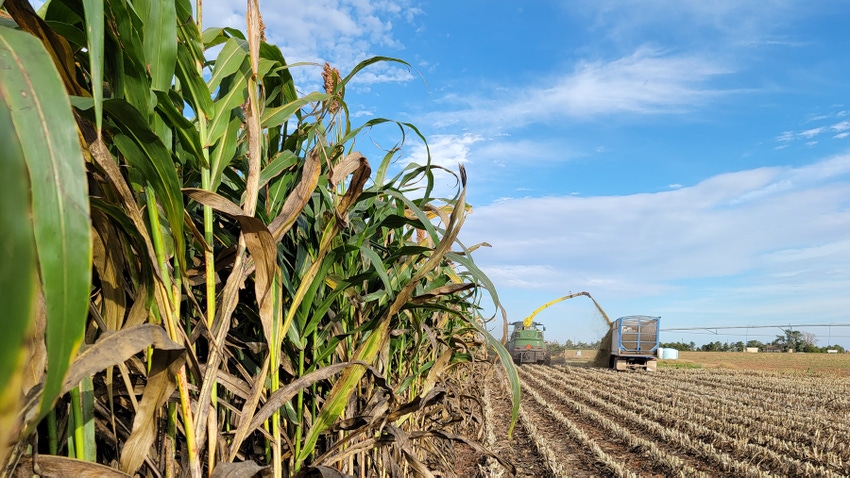
Despite this summer’s heat wave, Texas sorghum is faring well, according to Sorghum Checkoff Director of Agronomy Brent Bean.
South Texas sorghum had a good year thanks to “timely rains and no adverse weather conditions to speak of,” Bean says. “It did begin to get dry towards the end of the season, depending on where you were at, but overall, a good year.”
“We’ve seen some phenomenal grain sorghum yields,” says Jeff Nunley, executive director, South Texas Cotton and Grain, Corpus Christi, in a recent Farm Press article. “Grain sorghum yield of 6,000 pounds is common. It’s lower in dryer areas. The highest I’ve seen is 10,000 pounds on one small field. The field next to it made 9,000.”
The region also experienced low numbers of sugarcane aphids, stink bugs and head worms. “Nothing real serious,” Bean says.
Increased acres
Sorghum acres on the South Plains up into the Panhandle and western Kansas, have increased this year, Bean says. “The crop is looking good. Some of it went in a little later than we would want but for the most part, we still have plenty of time.”
One benefit of the summer’s triple-digit temperatures is that it’s allowed late sorghum to catch up on heat units, Bean adds. “That’s a good thing for some of this later sorghum.
“We did get enough rain to build up at least some water in the soil profile, so it’s been hanging in there pretty well with these hot days, although it’s beginning to dry in some areas.”
The region needs rain to finish out the crop. “We’re in those days that makes or breaks sorghum. Some sorghum is headed out. Some of this later sorghum is at boot stage or a little earlier but now is a key time. So, hopefully we can get some rain in the next few days to help the crop.”
The intense heat is not beneficial for grain-setting, Bean adds. “We talk about sorghum being very heat tolerant, and it is compared to other crops, but even sorghum doesn’t like this 100-degree weather. Sorghum is especially sensitive to heat around the boot and early flowering stages. Unfortunately, there’s nothing we can do about that.
“We would like to see some cooler temperatures but overall, the crop looks good. We just need some rain and good weather to finish it off.”
Sugarcane aphids
Scorching temperatures have not kept the sugarcane aphid at bay. “I’m surprised the aphid showed up as early as it did this year,” Bean says. “Especially since we did not see much of an issue with aphids in South and Central Texas. Generally, if we do not have an issue in South Texas, we’re not going to have an issue up here.”
Most fields are clean, but there are some fields where the aphids have come in and reached threshold and producers have had to spray. “I suspect in a lot of cases those are on the more susceptible hybrids that do not have tolerance to the sugarcane aphid,” Bean adds.
Producers growing silage sorghum tend to pull the treatment trigger quicker than those with grain sorghum, he says. “They don’t want the aphid to take off because it’s such an issue in getting good coverage, so they’ll pull the trigger pretty quick. Most fields are clean, but this can change quickly.”
No matter, Bean emphasized the importance of scouting. “We don’t know which fields they’re going to be in. We’ve had hot winds the last month and I think these winds have blown some aphids that were present in South Texas up here. Different fields just happen to be the lucky ones or the unlucky ones. You may look at one field and you’ve got aphids and then you look at the next six fields and you don’t have anything. So, they’re not centralized.”
Aphid numbers have been greater in Hale and Floyd counties, which is typical, he says, along with east of Amarillo and even up south of Wichita, Kansas. “I know a producer up there that had to spray, which is a bit surprising. All the fields around him were clean, so that’s kind of what we’re seeing. We haven’t heard of reports of aphids around the Dumas/Sunray area, but I suspect there’s a few fields that do have some aphids.”
He advises growers check their fields weekly. “See if anything is showing up and if you need to treat. But for now, most fields are clean.”
As producers scout for sugarcane aphids, Bean warns head worms should be on their radar as well. “If your sorghum is headed out, take a bucket and beat the head on the sides of the bucket and look for head worms. We tend to forget that pest, but it can cause damage.
“We’ve got good potential with a lot of this sorghum, so let’s hang on to it and protect it.”
Irrigated sorghum
As sorghum approaches the boot state or early heading, Bean says, “this is a key time to irrigate, if possible. That can add a lot of grain numbers and weight or even tonnage from a silage standpoint.
Weeds
Weeds have been an issue where rainfall kept growers from applying their pre-emergent herbicide. “That puts a lot of pressure on getting a post herbicide to work and we’ve certainly seen that. I’ve had a few calls about ‘rescue treatments,’ what can you do?
Husky FX is an option up to 30-inch sorghum, says Bean. “Another treatment I like to use for a ‘rescue-type’ treatment is a mixture of atrazine with some bromoxynilin it, as well as 4 ounces of dicamba. That can also be applied up to about 30 days. You're kind of pushing the label on that, but if you’ve got a real mess and you need to do something, that's an option.”
A final option for a rescue treatment is applying dicamba after the crop reaches the soft dough stage. This will not give you 100 percent control of weeds, but can knock the weeds back enough to help with harvest, says Bean.
As for finishing out the season, “We’re at the mercy of the weather, so we’ll continue to pray for timely rains.”
Read more about:
Sugarcane AphidAbout the Author(s)
You May Also Like






